We Dated A Sacred Aboriginal Women’s Site Used for Birthing Ceremonies And Discovered 7,000 Years Of Tool Making
AncientPages.com - Investigation of a sacred area at Avon Downs in Jangga Country, Central Queensland, has uncovered evidence of stone tool production in a place that was traditionally restricted to women.
We detail our findings in newly published research in collaboration with archaeological expert Liz Hatte and Jangga Elders Colin McLennan and Marie Wallace.
General view at the Thirteen Mile Creek site. Image credit: Irina Ponomareva
Our excavation of the layered sediments at Avon Downs reveals a long history of raw stone extraction and tool making. In the short period of our study, we recorded about 1,500 stone artefacts on the surface and under the ground.
And this is just the tip of the iceberg, as we expect more detailed evidence of tool production to be found beneath the site’s surface and in neighbouring areas.
By dating these artefacts, we have traced a 7,000-year history of continuous stone tool production by Aboriginal women – including objects traditionally associated with men. We are also the first team to ever date a sacred Aboriginal women’s area.
Hundreds of generations of tool making
Using a technique called optically stimulated luminescence, we measured the age of individual sand grains within the artefact-rich layers of the hill slope. We were then able to date the artefacts by association.
The uncovered artefacts varied in age from about 430 years ago (before the first Europeans arrived) to some 7,000 years ago. This implies the site was used for stone tool production and possibly as a sacred women’s area for hundreds of generations.
Jangga Elders Colin McLennan and Marie Wallace have a shared memory extending as far back as at least six generations. They understand the site has always been forbidden to men, as it continues to be today.
The axe blank found at the Thirteen Mile Creek site. Irina Ponomareva
While some of the relevant sacred knowledge remains restricted, we can report Jangga women came to Gaio Nanhi Bura (women’s sacred place) to give birth and perform associated ceremonies until the turn of the 20th century.
Some of the stone tools were used in sacred ways, such as for cutting the umbilical cord of newborn babies, says Wallace. Drill points, ochre and a grinding stone and muller are further evidence of everyday tool making and decoration.
The rare discovery of an unfinished axe, ready to be ground and polished, is also somewhat surprising, as axe making is typically associated with male crafters.
The site remains a direct link between modern Jangga women and their ancestors. Today’s Jangga women who have visited and worked on the site describe feeling a strong sense of peace and belonging, as well as the presence of their ancestors.
Railway project disruptions
Like many other Aboriginal sites in Australia, the Avon Downs Women’s Area has faced threats. It sits in the way of the North Galilee Basin Rail Project, which stretches from the Carmichael coal mine to the port at Abbot Point.
A map with the location of the site. Irina Ponomareva
Planning for this project started in 2012, prompting cultural heritage surveys, assessments and negotiations with Traditional Owners.
In 2014, the sacred area at Avon Downs was revealed following a survey and consultations with Jangga Elders. The artefacts themselves, which had been partially hidden by thick spinifex grass, were discovered in 2020 during cultural heritage monitoring before the clearance of native forest.
After extended negotiations with the Carmichael project representatives, and some news coverage of the archaeological discoveries, a solution was found.
For the benefit of future study, the site was conserved as a protected portion inside the rail corridor – but not without any loss. This portion is a fragmented piece of a much larger complex of camp sites and knapping floors (areas where stone tools were shaped) – but there is no longer free access between these individual sites.
So while the railway project will not run directly through, it has still compromised the integrity of the area.
Protecting sacred area
Sacred Aborignal women’s sites are often difficult to protect in their entirety. It can be challenging to demonstrate their cultural value when the associated knowledge is restricted to a few members of the Aboriginal community.
The protection of these sites has been hampered by past misunderstandings of Aboriginal cultures, as well as racism, sexism and misogyny.
Throughout Australia, there are only a handful of examples where Aboriginal women have chosen to disclose secret information to protect sacred women’s sites for future generations.
When explaining the importance of protecting and recording Jangga traditional knowledge and culture, Wallace emphasised the Jangga people’s belief that such sacred places can even be dangerous:
You are not supposed to touch anything, or take away something. They can make you sick.
Jangga people maintain the sanctity of these areas in their collective memory, providing a seamless connection between living memory and the dated sequence of sediments and artefacts.
And while their current cultural traditions in the Avon Downs Women’s Area can be traced back to several hundred years, we may be able to extend this to several thousand as more archaeological evidence becomes available.
Provided by The Conversation
This article is republished from The Conversation under a Creative Commons license. Read the original article.
More From Ancient Pages
-
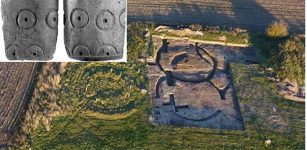 Dazzling Time Capsule Of Unique Iron Age Artifacts And Celtic Roundhouses Discovered In England
Archaeology | Mar 15, 2022
Dazzling Time Capsule Of Unique Iron Age Artifacts And Celtic Roundhouses Discovered In England
Archaeology | Mar 15, 2022 -
 On This Day In History: Mary Queen Of Scots Was Forced To Abdicate – On July 24, 1567
News | Jul 24, 2016
On This Day In History: Mary Queen Of Scots Was Forced To Abdicate – On July 24, 1567
News | Jul 24, 2016 -
 Antediluvian Time-Capsule Hidden In Forbidden Ancient Egyptian Crypts?
Ancient Mysteries | May 7, 2018
Antediluvian Time-Capsule Hidden In Forbidden Ancient Egyptian Crypts?
Ancient Mysteries | May 7, 2018 -
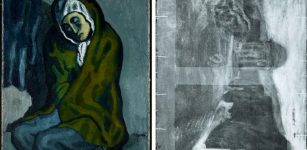 Hidden Details Discovered In Picasso’s Painting The Crouching Woman
Archaeology | Feb 28, 2018
Hidden Details Discovered In Picasso’s Painting The Crouching Woman
Archaeology | Feb 28, 2018 -
 Secret Underground Ancient Teotihuacan Tunnel May Solve A Long-Standing Mystery And Reveal Royal Tombs
Civilizations | Jul 8, 2016
Secret Underground Ancient Teotihuacan Tunnel May Solve A Long-Standing Mystery And Reveal Royal Tombs
Civilizations | Jul 8, 2016 -
 USC Archeologist Discovers Maya Royal Burial Site
Archaeology | Jan 9, 2016
USC Archeologist Discovers Maya Royal Burial Site
Archaeology | Jan 9, 2016 -
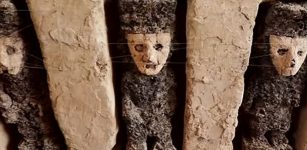 Wooden Pre-Columbian Human-Like Statues Discovered At Chan Chan Complex In Peru
Archaeology | Oct 25, 2018
Wooden Pre-Columbian Human-Like Statues Discovered At Chan Chan Complex In Peru
Archaeology | Oct 25, 2018 -
 Why Do Some Cities Only Last A Century While Others Prosper For A Thousand Years Or More?
Archaeology | Mar 6, 2023
Why Do Some Cities Only Last A Century While Others Prosper For A Thousand Years Or More?
Archaeology | Mar 6, 2023 -
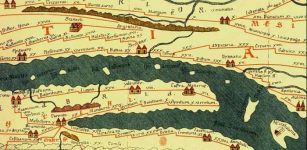 Tabula Peutingeriana: Huge Ancient Roman Map Created By Unknown Cartographer
Artifacts | Dec 14, 2018
Tabula Peutingeriana: Huge Ancient Roman Map Created By Unknown Cartographer
Artifacts | Dec 14, 2018 -
 Royal Tombs Of Alexander The Great’s Family At Vergina, Greece Finally Identified
Archaeology | Jan 31, 2024
Royal Tombs Of Alexander The Great’s Family At Vergina, Greece Finally Identified
Archaeology | Jan 31, 2024 -
 Ganesha: Elephant-Headed God Of Knowledge, Learning, Literature And Scribe Of The Mahabharata
Featured Stories | Aug 17, 2016
Ganesha: Elephant-Headed God Of Knowledge, Learning, Literature And Scribe Of The Mahabharata
Featured Stories | Aug 17, 2016 -
 On This Day In History: He Wanted The Bible To Be Available To All – Burned At The Stake On Oct 6, 1536
News | Oct 6, 2016
On This Day In History: He Wanted The Bible To Be Available To All – Burned At The Stake On Oct 6, 1536
News | Oct 6, 2016 -
 Albert Pike’s Masonic Prophecy About The Three World Wars
Featured Stories | Jan 15, 2018
Albert Pike’s Masonic Prophecy About The Three World Wars
Featured Stories | Jan 15, 2018 -
 Mysterious Ichthys – Ancient Secret Christian Symbol With A Deep Meaning
Ancient Symbols | Mar 6, 2018
Mysterious Ichthys – Ancient Secret Christian Symbol With A Deep Meaning
Ancient Symbols | Mar 6, 2018 -
 Face Of A Greek Girl That Lived 9,000-Years Ago Reconstructed In Athens
Archaeology | Jan 27, 2018
Face Of A Greek Girl That Lived 9,000-Years Ago Reconstructed In Athens
Archaeology | Jan 27, 2018 -
 Valkyries Sigrdriva And Brynhildr: Brave Warriors Who Were Punished By God Odin In Norse And Germanic Mythology
Featured Stories | Apr 4, 2017
Valkyries Sigrdriva And Brynhildr: Brave Warriors Who Were Punished By God Odin In Norse And Germanic Mythology
Featured Stories | Apr 4, 2017 -
 Living Descendant Of Legendary Native American Leader Sitting Bull Confirmed Using DNA From Hair
Archaeology | Oct 27, 2021
Living Descendant Of Legendary Native American Leader Sitting Bull Confirmed Using DNA From Hair
Archaeology | Oct 27, 2021 -
 Michael Scott – Fascinating Wizard Who Tutored The Holy Roman Emperor Frederick II
Featured Stories | Mar 7, 2025
Michael Scott – Fascinating Wizard Who Tutored The Holy Roman Emperor Frederick II
Featured Stories | Mar 7, 2025 -
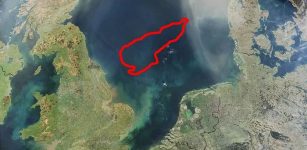 Magnetic Fields Used To Explore Doggerland And Other Prehistoric Submerged Sites
Archaeology | Mar 10, 2023
Magnetic Fields Used To Explore Doggerland And Other Prehistoric Submerged Sites
Archaeology | Mar 10, 2023 -
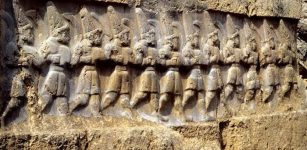 Secret Ancient Lunar Calendar May Be Hidden At A Hittite Sanctuary
Archaeology | Jul 3, 2019
Secret Ancient Lunar Calendar May Be Hidden At A Hittite Sanctuary
Archaeology | Jul 3, 2019



